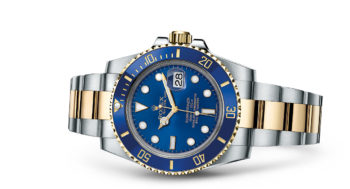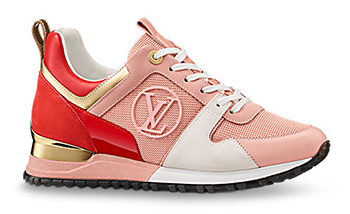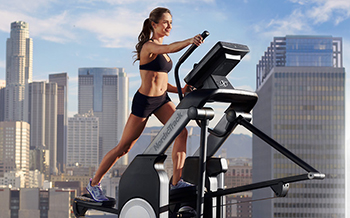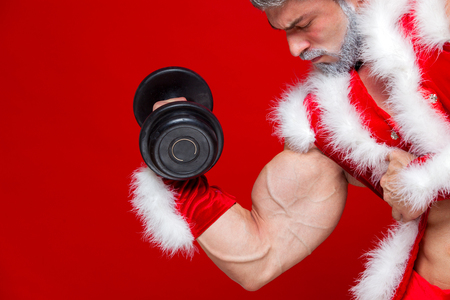What was your 2017 health resolution? Did you keep it? If you’re like most Americans, we lost millions of pounds, but gained over 80% of it back. While some did keep their resolution, and are now thinner and fitter, for many it was a bitter defeat. So, how do you really keep a fitness and health resolution and maintain that which you achieved? Let’s show you how to do it the right way.
So, you went to Thanksgiving, Christmas, or other holiday dinner and even though you didn’t need it, you succumbed to another serving and maybe another round of drinks. After all, the holidays are about having fun and indulging with family and friends, right? And, because January 1 is right around the corner you have already made the commitment to get out and be healthier so, a little indulgence won’t hurt right now. Wrong! You’re already indulging and life after December will just be a continuation of now. This is why so many keep their excess body weight and remain sluggish because there is always tomorrow, despite the fact you didn’t get any of your resolution goals accomplished today.
 If this sounds familiar, you’re not alone; million around the U.S. are in the same boat. Every year in the gym there is the huge rush and crowds for the first 4-8 weeks of the year, which slowly dwindles down to the same old crew you ended the last year with. While the objective to get fit and lose weight is a noble one there is a tiny problem – to accomplish this you must follow through.
If this sounds familiar, you’re not alone; million around the U.S. are in the same boat. Every year in the gym there is the huge rush and crowds for the first 4-8 weeks of the year, which slowly dwindles down to the same old crew you ended the last year with. While the objective to get fit and lose weight is a noble one there is a tiny problem – to accomplish this you must follow through.
Face it, the dream of a fitter and healthier you will take time and that’s the main commitment you need to make to yourself. And, the longer you’ve been inactive, the harder it will be to make this commitment.
However, there is hope. Exercise doesn’t need to be an all-consuming endeavor, just a persistent one. While you may not be a professional athlete or look like one during the first 6 weeks of 2018, you will succeed. Those commercials you see on television and social media, with athletes, men and women, sweating and hard looking as a ripped cheetah, are not realistic for most. You should realize that about perhaps 1% of our population or less can perform such high-intensity exercises. Thus, don’t be unrealistic about your goals.
First, you need to commit to time. I want you to commit to 30 minutes per day, 5-days per week. Second, you need to begin slow. As you begin, if you are not currently active, you will find soreness and pain and discomfort associated with your exercise. There is after all an inexorable link – you have heard the adage ‘no pain, no gain.’ However, do not shoot for this as a beginner in the gym at the beginning of the year. A great many people do not return because they over-exercise the first couple of times in the gym and get so sore, they can barely move after a few days. Pain will come naturally to the inactive or active so, do not succumb to the temptation. Do not compete against Joe or Jane bodybuilder who are already fit, they were not always so. Take your time, but be persistent. There’s a connection between exercise and pain, discomfort, and soreness.
 Let’s just focus on the average person, because if you’re not currently active, physically you are an average person. And, for the average, the best fitness program consists of exercises that work the entire body. You can begin with just basic body squats (also misnamed air squats by some) that only require folding your arms and doing squats in place. Then, there’s biking, fast (or slow depending on your fitness level) walking, biking, jogging, etc. for cardio portions of your workout. Thus, think of both strength and cardio when you begin. The latter improves the functioning of the heart and lungs, as well as blood vessels, while resistance in strength training will increase bone density and help build muscles, and strengthen joints and connective tissues.
Let’s just focus on the average person, because if you’re not currently active, physically you are an average person. And, for the average, the best fitness program consists of exercises that work the entire body. You can begin with just basic body squats (also misnamed air squats by some) that only require folding your arms and doing squats in place. Then, there’s biking, fast (or slow depending on your fitness level) walking, biking, jogging, etc. for cardio portions of your workout. Thus, think of both strength and cardio when you begin. The latter improves the functioning of the heart and lungs, as well as blood vessels, while resistance in strength training will increase bone density and help build muscles, and strengthen joints and connective tissues.
Overall, you will get fitter in the new year by stimulating your body. The best way to do this is to initially stay a little out of your comfort zone. In other words, challenge yourself, but don’t try to be or compete with a pro athlete in your current condition. While you can ‘do it’ as you go, you need to use a little common sense. We will help you with our free 30-day express program, which for both December and January will be for the beginner. While there are also what we call pre-beginner’s, we will discuss them in another article.
To summarize so far, make a 30-minutes per day time commitment 5-days per week then, begin slowly. Do not overdo it or feel you need to compete with others. You are competing with yourself – to make yourself better than you were yesterday. Once you’re fit then, compete with others if you wish. This all means that you need to set realistic expectations for your health and fitness goals. Assess where you are and then set stepping-stone goals to get where you want to be – do not overwhelm yourself. For example, if you want to lose 20 pounds, do not try to do it in one week. A loss of 1-2 pounds is better and healthier. Also, to lose a pound requires burning about 3,500 calories and the average workout for 20-30 minutes creates a loss of 200-500 calories depending on your exercise so, be patient, but very persistent.
All of this means to limit your resolutions to something you can accomplish. Breaking it down, set one small nutrition goal, a small physical activity goal and perhaps a health goal. Examples, in order, could be to control your food portion size at meal time; lose 5 pounds the first 6 weeks of 2018, not 20; and, determine to take stairs, leisurely walks around the park, enjoy nature, or other basic health goal. By making small, stepping-stone, yet achievable goals, you will become more fit and begin devoting more time to your body and mind. As time passes and you are persistent, you’ll eat healthier, exercise more intensely as you work into and thus, become a more fit and healthy you. Track your progress always.
From all the clients, pro and average, I have worked with, once you make the time, choosing the appropriate fitness program becomes a challenge. Especially since each of us are uniquely different, which means that different activities fit different people. As an example, I love to speed sprint and despise using cardio machines in the gym. On the other hand, many are content to do the latter. Find what works best for you and do not give up trying.
In the Gym
What exercise equipment will work best for you? The ones you like to do most. If you do not like exercising on a specific piece of equipment, don’t – all you’ll end up doing is not enjoying your time in the gym. And, if you have a workout program and you do not like exercises, substitute them with others. This is the best way to get through the initial workout phases of your New Year’s Resolutions.
If you are bored in the gym, you will fail so, choose exercises you enjoy and that challenge you. Some people like to jog, others like to sprint – what kind of person are you? Perhaps you would have more fun in a pick-up basket ball game. Then, do it! Whatever you like to do most, make that the center of your fitness program. Personally, I like to run stairs/bleachers and not bike. Just a personality thing – find yours. Next, challenge yourself with it by slowly increasing your intensity.
 A friend of mine, Dave, has always enjoyed walking his dog. Lately, he decided to get a backpack that holds a water bladder, put about 20 pounds in it and run with his dog in the park, up hills, and down the jogging path. He’s lost 15 pounds in the last 7 weeks. His goal is to be more fit on January 1, 2018 and then, increase his intensity, lose another 10 pounds, and build lean-muscle mass after that. As you can see, he started slow, without a pack, then added some intensity and began challenging himself. It all started from something he loved to do. After all, there are more ways to become fit than just spending time only in the gym. Also, as you can see, his exercise wasn’t a formal activity, but an activity he already liked to do, he just added more to it and changed it up.
A friend of mine, Dave, has always enjoyed walking his dog. Lately, he decided to get a backpack that holds a water bladder, put about 20 pounds in it and run with his dog in the park, up hills, and down the jogging path. He’s lost 15 pounds in the last 7 weeks. His goal is to be more fit on January 1, 2018 and then, increase his intensity, lose another 10 pounds, and build lean-muscle mass after that. As you can see, he started slow, without a pack, then added some intensity and began challenging himself. It all started from something he loved to do. After all, there are more ways to become fit than just spending time only in the gym. Also, as you can see, his exercise wasn’t a formal activity, but an activity he already liked to do, he just added more to it and changed it up.
If you look at how Dave began, his routine changed to a basic activity that doubled as a weight-bearing exercise. First, just the walking, then adding the pack with some weight, which was a camera, 3 liters of water, snacks for his dog and other items. In other words, he used his body weight against gravity that became more intense over time. Other examples of this include walking, push-ups, basketball, martial arts, cross-fit, weight training, Olympic lifting, bodybuilding, etc.
As you get into the gym and find time running short on some days, work your larger muscle groups first – legs, back, trunk, and chest. Then, if you have time, get the rest of your exercises done. After all, time is the big complaint so, use it efficiently and as my dad used to say, “Don’t let your bull-dog mouth bite off more than your puppy-dog butt can chew.” This means to begin slow and work up.
So, begin setting your goals today. Make them realistic, start slowly, and be persistent. Above all, choose exercises you like to do and if you do not know how to do them properly, ask one of the trainers in your gym who will be happy to help or, hire your own personal trainer to push you along.
While you’re getting a handle on your exercises, start looking at your nutrition. You cannot learn it all in one day, but our website has many articles that can enlighten you to help you make the best choices and, make your nutrition, like your workout, individually you! Take a few minutes on the weekend to play your weekly food intake. The more you do it, the easier, like fitness it will be. Avoid eating out more than once per week and plan nutritious snacks and meals that work best for you and that you like. Keys are to watch your portion size, eat slowly, add fruits and vegetables and reduce sugar intake – the latter is the enemy of weight loss. As a matter of fact, I’ll give you a challenge. Abstain from sugar for 30 days and you’ll lose at least 10 pounds, even without exercise. This means no wine or alcohol either. Keep snacks with you that have 100-200 calories and have them mid-morning and mid-afternoon to keep from getting too hungry. Healthy snacks, not chocolate bars. If you get too hungry, you will overeat your meals and gain weight, not lose it. Weight loss is all about energy in minus energy out and food is your energy.
Do not be so exuberant in the beginning that you injury yourself or try to modify your nutrition too much. When you do such things, you can get injured quickly causing a set back and hate what you’re eating and go back to your old ways. The latter is why diets do not work – diets do not modify your eating habits, which took years to develop so, take control and go slowly. Eat foods you like, but not high fat and sugar types. Use common sense.
To figure out whether you are exercising at the right level, try the talk test. The goal is to carry on a basic level of conversation without being out of breath. If you find that you are too chatty, however, chances are you are not working hard enough.
Summary
1. Make your resolutions – work on small goals that you can achieve such as a 5-pound weight loss instead of 20. Do this for your fitness, nutrition, and health (incorporate all together) and write them down to hold yourself accountable;
2. Make a time commitment – 30-minutes per day 5-days per week; you got it, put it in your calendar to stare you in the face;
3. Start slowly choosing exercises you enjoy whether in the gym or out. If you get hurt, work around it; use the rest of your body as much as you can while the injured portion heals – do not let this be an excuse to stop! Once healed, slowly increase your intensity; and
4. Be persistent!
These simple steps will help you reach your 2018 fitness and health resolutions. Have a happy and healthy day.







